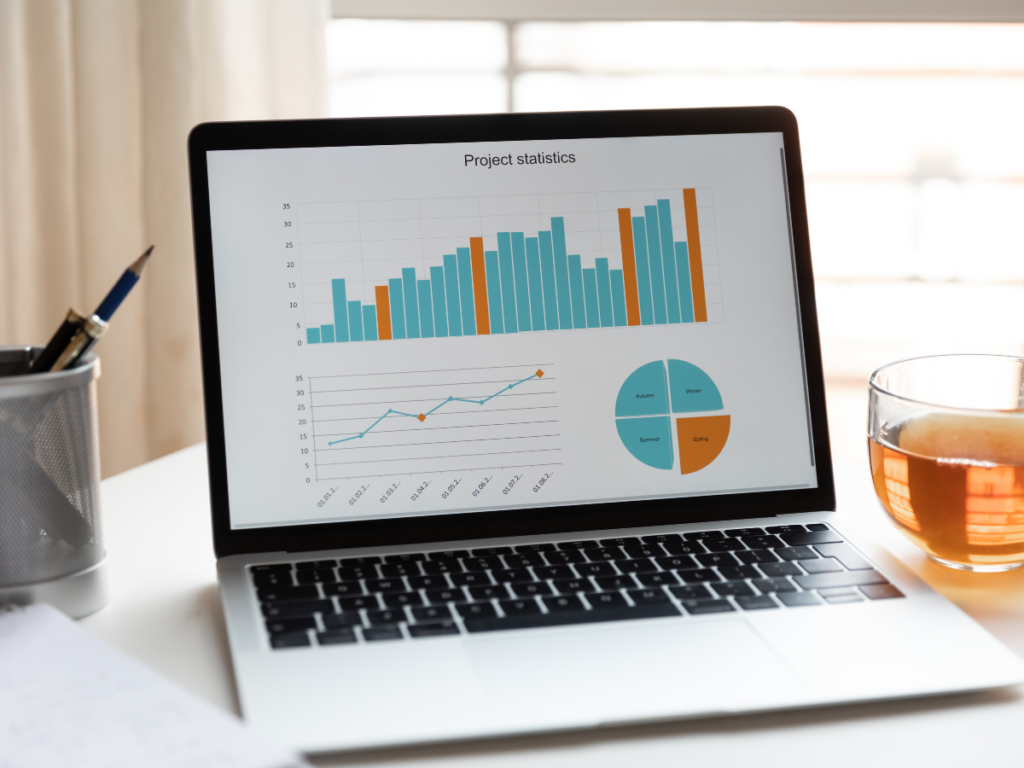
Many people believe that once a project is planned and initiated, they can sit back and relax while it unfolds. However, they often overlook a crucial aspect: project monitoring.
Project monitoring holds the key to success, yet they are frequently ignored, leading to unforeseen challenges and missed opportunities. It is the ongoing process of tracking and evaluating a project's progress to ensure timely completion and optimal outcomes.
If you want to learn more about project monitoring, there are a lot of resources available online and in libraries. You can also take project management courses. Learning project management skills will help you to be a more effective project manager and deliver successful projects.
Additionally, we're lucky to have interviewed experienced professionals who are ready to share valuable tips from their vast experience. Keep reading to discover the valuable insights they have to offer.

Project Monitoring: Advice from Experts
Continuous Quality Assurance
A vital aspect often overlooked is continuous quality assurance. It is a proactive approach to quality management, and it can help to identify and prevent problems before they occur. Lav Patel, Founder of Collage Master, suggests:
"Monitor the quality of the output, especially in a creative field like ours where customization is key... Remember, a successful project is a result of continuous monitoring and adaptive strategies that align with the project's evolving needs."
Tips for continuous quality assurance:
- Set clear quality standards: What does it mean for a product or service to be "high quality"? What are the specific requirements that must be met?
- Establish a process for monitoring quality: This could involve things like testing, inspection, and review.
- Involve all stakeholders in the CQA process: This includes customers, users, developers, and managers.
- Be proactive: Don't wait for problems to occur before taking action.
- Continuously improve: As you learn more about the product or service, you should continually improve your CQA process.
The Project Trinity: Scope, Schedule and Budget
In the project outline, scope, schedule, and budget play a crucial role in defining the project's parameters and setting the path for success. However, their significance doesn't end there. Here's a great analogy from Daniel Cooper Managing Partner at Lolly.
Project monitoring, huh? Think of it like baking a cake. You can't just mix the ingredients and forget about it in the oven, right? You gotta check if it's rising, if it's browning, or if it's still a gooey mess. Same with projects. You gotta keep an eye on 'em. But what to look at? Three things: Scope, Schedule, and Budget. Or as I like to call 'em, the "Project Trinity".
Daniel's analogy of the "Project Trinity" is a great way to remember the importance of these three aspects of project management. Just like the three ingredients in a cake, scope, schedule, and budget are all essential for a successful project.
Daniel explains:
- Scope your recipe: You gotta make sure you're baking what you set out to bake. Are you sticking to the plan or have you accidentally started baking a pie?
- Schedule your baking time: Are you on track or is your cake gonna be burnt to a crisp because you lost track of time?
- Budget your ingredients: Do you have enough of what you need or are you gonna run out of sugar halfway through?
“And how do you do it effectively? Simple. Regular check-ins, clear communication, and a pinch of flexibility. Remember, a little deviation is okay. No cake (or project) is perfect. But with the right monitoring, it'll be pretty darn close. Happy baking! I mean, monitoring.”

Track Stakeholder Engagement Metrics
Jeff Mains, a project management expert and CEO of Champion Leadership Group LLC, stresses the significance of a comprehensive approach to project implementation and monitoring, one that incorporates both quantitative and qualitative metrics. Particularly, he emphasizes the importance of tracking stakeholder engagement metrics:
"Firstly, stakeholder engagement metrics are a critical aspect of effective project monitoring. Engaged stakeholders are more likely to provide valuable insights, timely feedback, and support, which significantly contribute to project success. Monitoring stakeholder satisfaction and involvement levels throughout the project's execution allows project managers to address any concerns promptly, keep stakeholders informed, and foster a collaborative environment."
Here are some tips for tracking stakeholder engagement metrics:
- Identify your stakeholders: Who are the people who have a stake in the project? This could include customers, users, partners, suppliers, and internal stakeholders.
- Define your engagement goals: What do you want to achieve by tracking stakeholder engagement? Do you want to increase satisfaction, improve communication, or get more input from stakeholders?
- Select the right metrics: There are many different ways to measure stakeholder engagement. You can use surveys, interviews, focus groups, or even social media monitoring.
- Collect data regularly: You need to collect data on stakeholder engagement on a regular basis in order to track progress and identify any areas where improvement is needed.
- Take action: Once you have identified areas where improvement is needed, you need to take action to address them. This could involve changing the project plan, communicating more effectively with stakeholders, or providing additional training.
Simplify KPIs and Base Them on Evidence
Marco Scanu, the CEO of Visa Business Plans, highlights the significance of simplicity and evidence when it comes to Key Performance Indicators (KPIs) in project monitoring.
"KPI should define only one measure of performance, one that is direct and observable so that it is specific and evidence-based. KPIs should not be copied from common industry metrics."
"A project manager's job requires being able to generate KPIs based on the direct observation of their team and operations," Marco added.
Tips to develop your simplified and evidence-based KPIs:
- Start by defining the goals of your project: What do you want to achieve with this project? Once you know the goals, you can start to identify the metrics that will measure your success.
- Choose metrics that are specific, measurable, achievable, relevant, and time-bound: This will help you to track your progress and ensure that you are on track to meet your goals.
- Base your KPIs on real data: Don't just make assumptions about what metrics are important. Collect data and use it to inform your decision-making.
- Communicate your KPIs to your team: This will help everyone to understand what they are being measured on and how their work contributes to the success of the project.
- Review your KPIs regularly: As the project progresses, you may need to adjust your KPIs to make sure that they are still relevant.
Implement a Robust Change Management Process
Change management is a critical aspect of effective project monitoring. This process involves evaluating and controlling any changes to the project scope, schedule, and resources. Jeremy Lesher, Co-Owner & Product Manager of Bluegrass Foundation Repair, suggests:
"Implement a robust change management process to evaluate and control changes to the project scope, schedule, and resources. Ensure that changes are properly evaluated before implementation."
Here are some tips to implement a robust change management process:
- The change management process should be documented and communicated to all stakeholders: This will help to ensure that everyone is aware of the process and how to participate in it.
- Document the changes and their impact on the project: This will help to track the changes and make sure that they are implemented correctly.
- Track the changes and make sure that they are implemented correctly: This will help to ensure that the changes are effective and that the project stays on track.

More Tips for Effective Project Monitoring
- Set clear objectives: Establish clear and measurable project objectives from the outset. These objectives serve as benchmarks for monitoring progress and success throughout the project's lifecycle.
- Regular progress updates: Ensure regular updates on the project's progress. Hold status meetings or use project management tools to keep all team members informed about their tasks, deadlines, and overall progress.
- Identify and address risks: Proactively identify potential risks and challenges that may arise during the project. Develop risk mitigation strategies and be prepared to take action if risks materialize.
- Adaptability and flexibility: Stay flexible and open to adjustments as needed. Projects often encounter unforeseen changes, and being adaptable allows you to respond effectively to new circumstances.
- Use project management tools: Leverage project management software and tools to track tasks, deadlines, and resource allocation. These tools streamline monitoring and improve overall project efficiency.
- Regular data analysis: Analyze project data regularly to gain insights into performance trends, identify patterns, and make data-driven decisions to optimize project outcomes.
- Document everything: Maintain comprehensive documentation of project activities, decisions, and changes. A well-documented project ensures clear communication and helps in post-project evaluation.
- Celebrate milestones: Acknowledge and celebrate project milestones and achievements with the team. Recognizing progress boosts morale and motivates everyone to stay committed to the project's success.
- Continuous improvement: Continuously review and improve project monitoring processes. Learn from past experiences to enhance future project management practices.

The Importance of Data-Driven Project Monitoring
We, at Skill Success, believe that the importance of data in project monitoring cannot be overstated. Data serves as the backbone of effective project management, providing valuable insights, tracking progress, and informing decision-making throughout the project's lifecycle.
Data plays a crucial role in measuring KPI and evaluating project performance against established benchmarks. By collecting and analyzing relevant data, project managers can identify areas of improvement, detect potential issues, and make data-driven adjustments to ensure the project stays on track.
Data-driven project monitoring also enables project managers to proactively manage risks and allocate resources efficiently. It helps in identifying trends, patterns, and potential bottlenecks that may affect the project's success. Timely access to accurate data empowers project managers to respond quickly and implement appropriate measures to mitigate challenges.
Here are some additional tips from Joseff:
- Use a variety of data sources: Don't rely on just one source of data. The more data you have, the better your insights will be.
- Keep the data up-to-date: Data that is out of date is useless. Make sure to collect and analyze data on a regular basis.
- Automate data collection: This can free up project managers' time so that they can focus on other tasks, such as analyzing data and making decisions.
- Share the data with stakeholders: Stakeholders need to be kept informed about the project's progress. Sharing data with them will help them understand the project and make informed decisions.

Frequently Asked Questions about Project Monitoring
What is project monitoring, and why is it important?
Project monitoring is the ongoing process of tracking and evaluating a project's progress to ensure it stays on track and meets its objectives. It is essential because it helps identify potential issues early on, allows for timely adjustments, and ensures that the project stays aligned with its goals.
What are the key elements to monitor in a project?
The key elements to monitor in a project include scope, schedule, budget, quality, risks, and stakeholder engagement. Monitoring these aspects provides a comprehensive view of the project's performance and allows for effective decision-making.
What are the benefits of data-driven project monitoring?
Data-driven project monitoring enables project managers to make informed decisions based on accurate and relevant information. It helps identify trends, anticipate challenges, and optimize resource allocation, leading to more successful project outcomes.
What role does stakeholder engagement play in project monitoring?
Stakeholder engagement is critical in project monitoring as it helps maintain communication, gather feedback, and ensure stakeholders' alignment with project goals. Engaged stakeholders can provide valuable insights and support for project success.
How often should project monitoring be conducted?
The frequency of project monitoring depends on the project's complexity and duration. Generally, regular monitoring is necessary, with more frequent updates during critical project phases.
What are some common challenges in project monitoring?
Common challenges in project monitoring include inadequate data collection, difficulty in tracking complex projects, resistance to change, and insufficient communication with stakeholders. Addressing these challenges requires proactive planning and effective communication strategies.
Key Takeaways
The importance of project monitoring cannot be overstated. As we have explored in this roundup article, project monitoring is a continuous process that ensures projects stay on track, adapt to changing circumstances, and ultimately achieve success. By heeding the valuable advice shared by seasoned experts, you can equip yourself with the knowledge and tools to navigate the complexities of project monitoring effectively.
Additionally, I encourage you to subscribe to Skill Success All Access Pass. It grants you access to the entire library of courses, including comprehensive project management courses. With Skill Success, you can continuously enhance your project management skills and stay at the forefront of industry practices.
Project monitoring is an ongoing journey that requires attention and flexibility. Embrace it wholeheartedly, and let the wisdom from this article guide you to excellence in project management.

